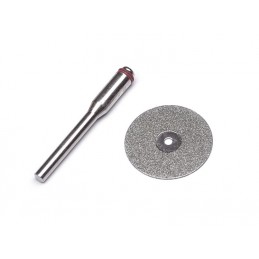

Keine Marke



Política de seguridad

Política de envío

Política de devolución
Aktuell keine Kunden-Kommentare
Riferimento: 9/11
This handy three-armed gripper acts as a finger-extension for placing screws and nuts in difficult, small and inaccessible places. Three-armed grippertotal length 115 mm
Riferimento: 11/80
A versatile bending tool for fuel tank pipes, dummy collective pitch sticks in the cockpit etc. The tool is useful for tubes or pushrods with a diameter of 3.0 and 3.2 mm
Riferimento: 11/60
The tubing cutter can handle aluminium, stainless steel and brass tubing up to 15 mm diameter. It can also be used to form a slight internal burr on tubing. For example if you use a tail rotor pushrod running in a PTFE sleeve in aluminium tubing, you can cut the aluminium to length at both ends with the tubing cutter, and the PTFE sleeve will not slip out.
Riferimento: 11/53
Use this small ridge cutter to remove sharp burrs and edges from aluminium and plastics; e.g. remove sharp edges from an aluminium pipe.
Riferimento: 107/2
This tiny tool is designed to help you screw pushrods into ball-links. It can either be used in the chuck of an electric drill, in the telescopic handle, or in a 5.5 mm socket. Ball-link driverfor 4 mm telescopic handle.
Riferimento: 70/21
Our easy-to-use dies are made of top-quality HSS steel. The bevelled entry to the dies ensures that the thread always starts exactly "square" and cuts cleanly. Good thread-cutting oil is as important as the die itself, as it extends the useful life of the tool several times over.
Riferimento: 11/56
If you enjoy building full-fuselage models you cannot help but appreciate practical tools which make your work easier. The glasspaper file is ideal for final trimming of openings for windows, doors and vent grilles after machining them out. The file is 25 cm long overall, with a sanding area 13 cm long and 2.5 cm wide on each side. The file is supplied...
Riferimento: 11/44
Accessories for the fine-point screwdriver set Ord.No. 11/39 are also available separately.
Riferimento: 64/2
If the flywheel of the clutch is sitting to tight on the tapper of the collet you can use this flywheel puller.For this purpose you remove the nut from the crankshaft, then put the puller on the crankshaft, and turn both socket-head cap screws equally approx. 5 mm into the thread of the flywheel; the flywheel loosens now.The length of the socket-head cap...
Riferimento: 9/5
When handling tools it is in your own interests to read and observe the safety information and constantly to be aware of the possible hazards, before you have a really close encounter with a workpiece which, for whatever reason, flies off. Wear these protective goggles when grinding, turning and machining, and also when you are cutting off steel rod....
Riferimento: 90/10
This special file set is particularly useful when you are cutting small openings, as they can be used to work on the tiniest of radii and straight edges. The rotary-action handle makes quick work of swapping individual tools. The collet can also be used to grip drills and taps of 2 to 5 mm ∅.
Riferimento: 11/34
Rotor blades for large-scale model helicopters must be secured using screws of the appropriate size. Normally M4 bolts are employed, but here the usual size is M6. The T-handle of this M6 allen key provides plenty of torque, but you should only tighten the screws to the point where the blades can still align themselves at start-up.
Riferimento: 11/28
If you enjoy building full-fuselage models you cannot help but appreciate practical tools which make your work easier. The glasspaper file is ideal for final trimming of openings for windows, doors and vent grilles after machining them out. The file is 25 cm long overall, with a sanding area 13 cm long and 2.5 cm wide on each side. The file is supplied...
Riferimento: 830/2
Extractor screwkey size 13for flywheel and split tapper collet on petrol engines
